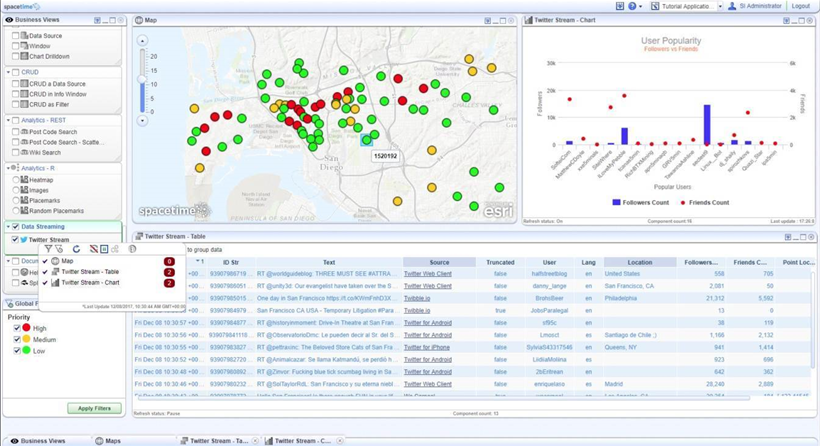Nokia has acquired SpaceTime Insight, a US-based company providing machine learning-powered analytics and IoT applications for some of the world’s largest transportation and energy organisations and utilities.
SpaceTime Insight’s machine learning models and other advanced analytics are designed specifically for asset-intensive industries, and predict asset health with a high degree of accuracy and optimise related operations, according to Nokia.
“SpaceTime Insight’s applications help customers reduce cost and risk, increase operational efficiencies, reduce service outages and more,” Nokia said in a statement.
SpaceTime Insight’s web site says: “Our applications help [our customers] reduce cost and risk, increase capital efficiency, pinpoint theft, spoilage, and shrinkage, lower the frequency and duration of service outages, personalize customer service, optimise field crews and operations, ensure regulatory compliance, and more.”
The business will become part of Nokia Software and, according to Nokia, will strengthen its IoT software portfolio and IoT analytics capabilities, and accelerate the development of its IoT offerings.
SpaceTime Insight CEO Rob Schilling will join the IoT product unit within the Nokia Software business group.
Ron Haberman, Head of Emerging Products, Nokia Software, told IoT Hub that initially Nokia would use its scale and its sales force to increase sales of SpaceTime Insight’s offering to utilities and transportation organisations and, to a lesser extent, manufacturing before targeting other sectors where Nokia already has presence.
“Their use cases, especially those in energy and transportation, translate across geographies very easily because most use very similar technologies,” he said.
“We have a strategy to go into new areas. We will continue to do that. We will also bring some of these use cases to CSPs that are looking to become application providers to these entities.”
SpaceTime Insight does not presently have customers in Australia, but Haberman said: “There are a few pipeline activities, and I think soon there will be some customers in Australia.
“SpaceTime’s focus has been on the end customer, with which Nokia as some business, but it is not very big compared to our CSP [carriage service provider] business.”
He said SpaceTime Insight’s technology would enable Nokia Software to expand its analytics offerings into the higher value area of prescriptive analytics.
“If you go from diagnostic to predicting to prescriptive models the value increases dramatically. So the more we can create use cases that create complete prescriptive models, hopefully soon to full automated optimisation, the more value there will be for us and for the customer.”
Haberman said Nokia Wing (short for Worldwide IoT Network Grid) would be the vehicle through which Nokia would offer SpaceTime Insight service to customers.
“Wing is a managed service handled our global services organisation … It lends itself very well to connect at an upper layer to an application created using SpaceTime.”
According to Nokia, Wing is a managed service that helps communication service providers go-to-market quickly.
“It has been created with communication service providers (CSPs) and enterprise customers in mind, as a service that can help them enter the world of IoT, or further grow their existing IoT offerings with a worldwide network grid designed by Nokia for IoT devices,” Nokia’s web site says.
Wing can be provided as a white label managed-service model, enabling operators to offer the service to their enterprise customers under their own brand.






